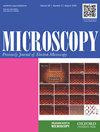维甲酸X受体的抑制改善了三维培养的小鼠角质形成细胞的形态、桥粒蛋白的定位和细胞旁通透性
IF 1.5
4区 工程技术
Q3 MICROSCOPY
引用次数: 0
摘要
维甲酸(Retinoic acid, RA)在上皮细胞稳态中起重要作用,影响上皮细胞的形态、增殖、分化和通透性。小鼠角质形成细胞K38在含有视黄醇(RA的一种来源)的血清的三维(3D)培养中重建了非角质化的分层上皮,但其形态与体内上皮不同。形成的上皮较厚,细胞间接触松散。在这里,我们研究了RXR拮抗剂HX 531对RA受体(RAR)/类维生素a X受体(RXR)介导的信号传导的抑制是否能改善K38 3D培养在形态学和细胞间连接方面的表现。0.5 μM HX531修复了促冻球蛋白(DSG)-1、DSG3和血小板红蛋白(PG)的层特异性分布,使其上皮变薄,细胞间隙变窄。DSG1、DSG2、DSG3、PG、CLDN (CLDN)-1、CLDN4等桥粒蛋白和紧密连接蛋白水平升高,粘附连接蛋白E-cadherin未见变化。此外,CLDN1被募集到阻断蛋白阳性细胞与浅层细胞的接触,上皮电阻值增加。因此,0.5 μM HX531处理的K38 3D培养物为研究非角化上皮细胞间连接提供了一个有用的体外模型。本文章由计算机程序翻译,如有差异,请以英文原文为准。
Inhibition of retinoid X receptor improved the morphology, localization of desmosomal proteins and paracellular permeability in three-dimensional cultures of mouse keratinocytes
Abstract Retinoic acid (RA) plays an important role in epithelial homeostasis and influences the morphology, proliferation, differentiation and permeability of epithelial cells. Mouse keratinocytes, K38, reconstituted non-keratinized stratified epithelium in three-dimensional (3D) cultures with serum, which contains retinol (a source of RA), but the morphology was different from in vivo epithelium. The formed epithelium was thick, with loosened cell–cell contacts. Here, we investigated whether the inhibition of RA receptor (RAR)/retinoid X receptor (RXR)-mediated signaling by an RXR antagonist, HX 531, improved K38 3D cultures in terms of morphology and intercellular junctions. The epithelium formed by 0.5 μM HX531 was thin, and the intercellular space was narrowed because of the restoration of the layer-specific distribution of desmoglein (DSG)-1, DSG3 and plakoglobin (PG). Moreover, the levels of desmosomal proteins and tight junction proteins, including DSG1, DSG2, DSG3, PG, claudin (CLDN)-1 and CLDN4 increased, but the adherens junction protein, E-cadherin, did not show any change. Furthermore, CLDN1 was recruited to occludin-positive cell–cell contacts in the superficial cells and transepithelial electrical resistance was increased. Therefore, K38 3D cultures treated with 0.5 μM HX531 provides a useful in vitro model to study intercellular junctions in the non-keratinized epithelium.
求助全文
通过发布文献求助,成功后即可免费获取论文全文。
去求助
来源期刊

Microscopy
Physics and Astronomy-Instrumentation
CiteScore
3.30
自引率
11.10%
发文量
76
期刊介绍:
Microscopy, previously Journal of Electron Microscopy, promotes research combined with any type of microscopy techniques, applied in life and material sciences. Microscopy is the official journal of the Japanese Society of Microscopy.
 求助内容:
求助内容: 应助结果提醒方式:
应助结果提醒方式:


